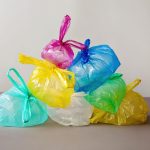
Korean blinds, also known as “jibari” or “hanji” blinds, are traditional window coverings that have been used in Korean architecture for centuries. These blinds not only serve functional purposes but also contribute to the aesthetic beauty of interior spaces. This discussion explores the different styles and materials used in Korean blinds Singapore, including the use of hanji (traditional Korean paper) and bamboo.
Styles of Korean Blinds:
Roller Blinds (Jijim):Roller blinds, or “jijim,” are one of the most common styles of Korean blinds. They feature a simple design where the fabric or paper is rolled up or down using a pulley system. Roller blinds offer ease of operation and can be adjusted to control the amount of light entering the room.
Panel Blinds (Noreum):Panel blinds, or “noreum,” consist of multiple fabric or paper panels that slide horizontally along a track. This style of Korean blinds is often used for larger windows or sliding doors, offering versatility and ease of use.
Roman Blinds (Juknok):
Roman blinds, or “juknok,” are characterized by their folded fabric or paper panels that stack neatly when raised. This style of Korean blinds provides a soft, elegant look and is ideal for adding warmth and texture to interior spaces.

Materials Used in Korean Blinds:
Hanji (Traditional Korean Paper):Hanji is a traditional Korean paper made from the inner bark of the mulberry tree. It is known for its strength, durability, and unique texture. Hanji blinds offer a soft, diffused light when illuminated, creating a serene ambiance in the room. They are often embellished with intricate designs or patterns, adding to their aesthetic appeal.
Bamboo:Bamboo blinds are crafted from natural bamboo slats or reeds woven together with cords or threads. They offer a rustic and organic look, bringing a touch of nature into interior spaces. Bamboo blinds provide excellent light filtration and privacy while allowing air circulation, making them suitable for both indoor and outdoor use.
Fabric: Fabric blinds are made from various types of textiles, including cotton, linen, or silk. They offer a wide range of colors, patterns, and textures, allowing for customization to suit different decor styles. Fabric blinds provide insulation against heat and cold, making them suitable for all seasons.
Conclusion:
Korean blinds Singapore encompasses a diverse range of styles and materials, each offering unique characteristics and benefits. Whether crafted from hanji paper, bamboo, or fabric, Korean blinds not only provide practical light control and privacy but also contribute to the visual beauty and cultural richness of interior spaces. By exploring different styles and materials, homeowners can find Korean blinds that complement their decor preferences while preserving the timeless elegance of traditional Korean craftsmanship.




